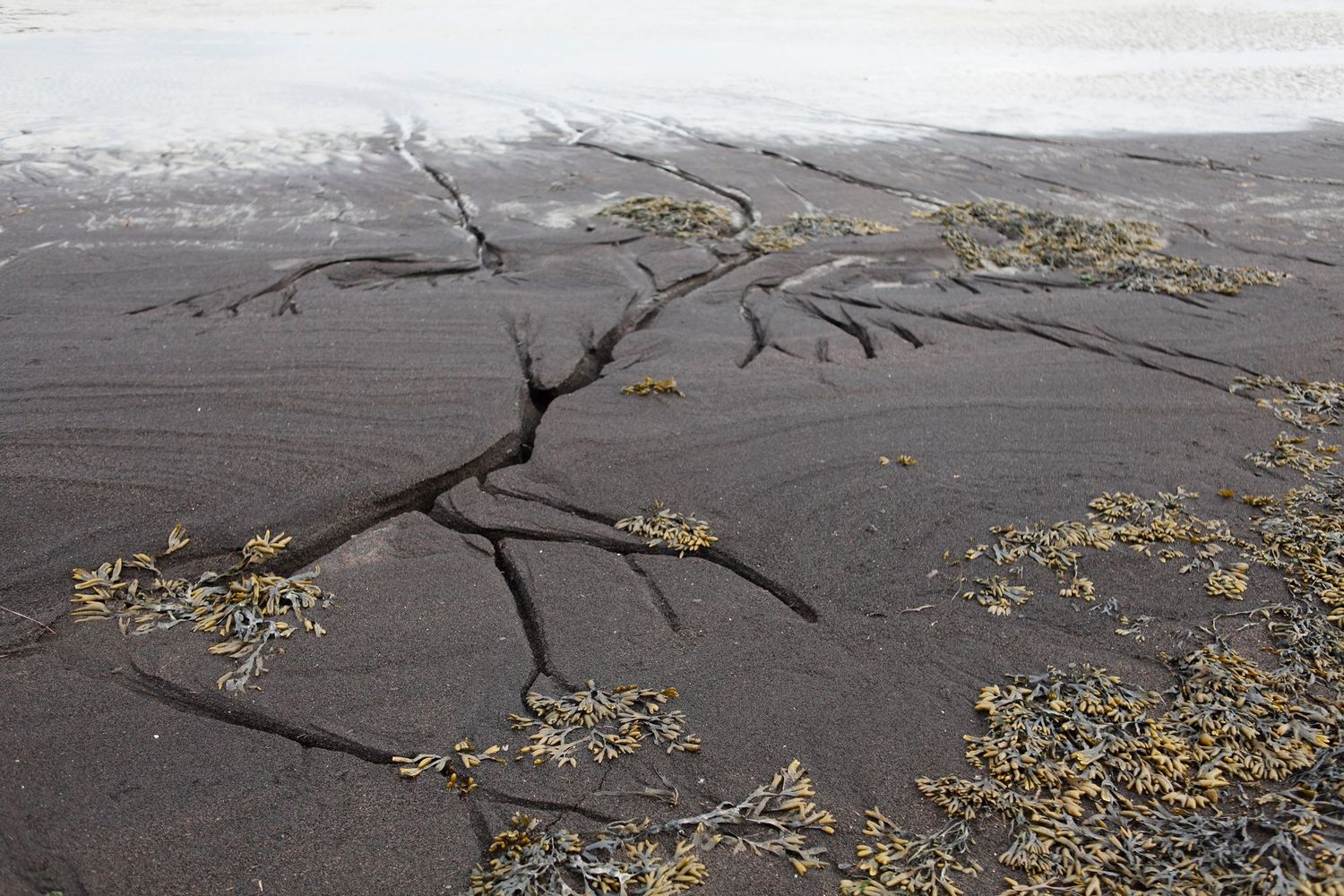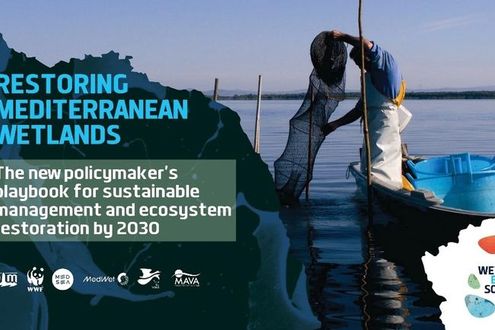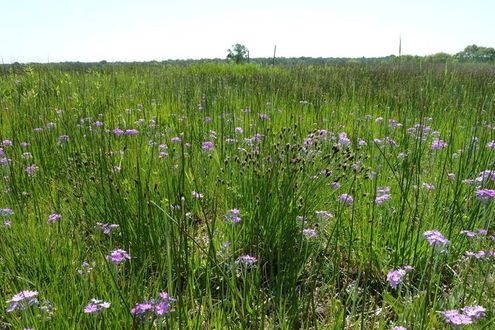What is the Ems-Dollard estuary?
The Ems-Dollard estuary is located on the border between the Netherlands and Germany, where the river Ems meets the Wadden Sea, one of the world’s largest tidal areas. The estuary is renowned for its sandflats, mudflats and coastal salt marshes.
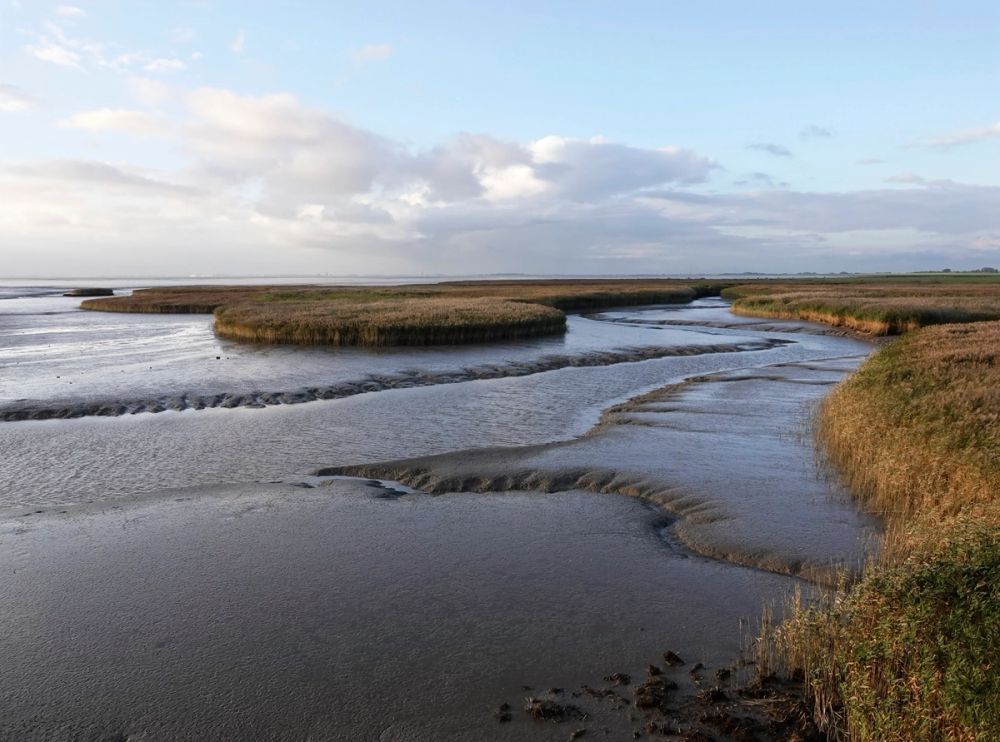
Since the Middle Ages, land has been reclaimed from the sea through the construction of dikes, which are barriers used to regulate water levels.
In recent years, the size of the estuary has decreased due to sedimentation of sand and silt, and reclamation of salt marshes along the coast.
The estuary faces different environmental challenges, including large amounts of sediment in the water, decreasing natural habitats, lack of fresh-saltwater transition areas, and a decline of food stock for birds and fish, which impacts the overall biodiversity of the region. Meanwhile, climate-change pressures are increasingly evident.
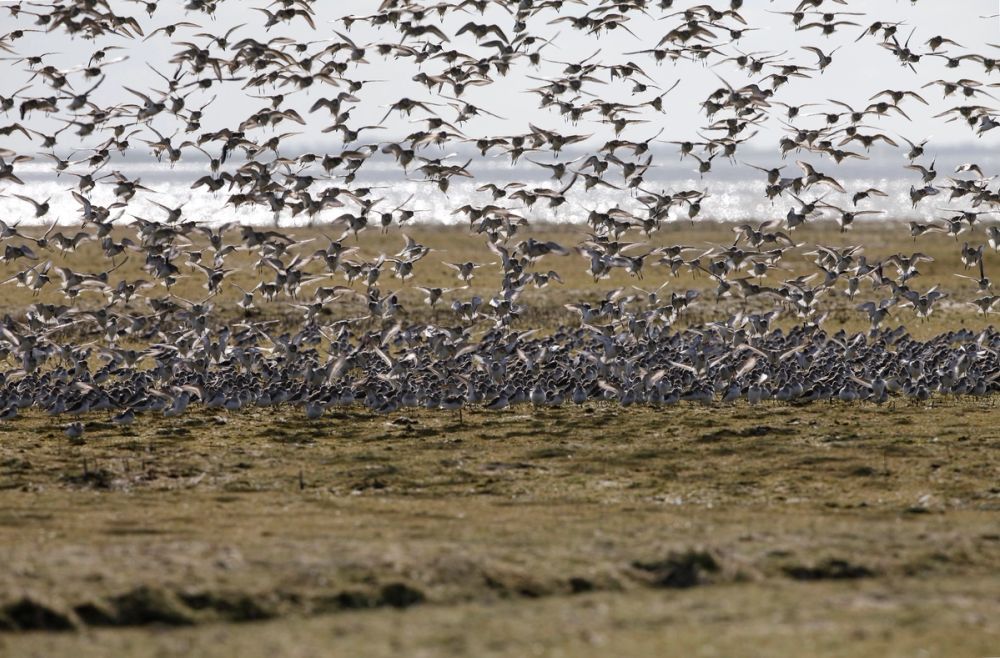
In 2016 Ems-Dollard 2050 (ED2050) was launched. The programme aims to improve water quality in the estuary, reduce turbidity and carry out wetland restoration to create new habitats for biodiversity and deal with the impacts of climate change.
ED2050 will address environmental challenges, while also creating positive outcomes and increasing liveability for the local communities and stakeholders in the region.
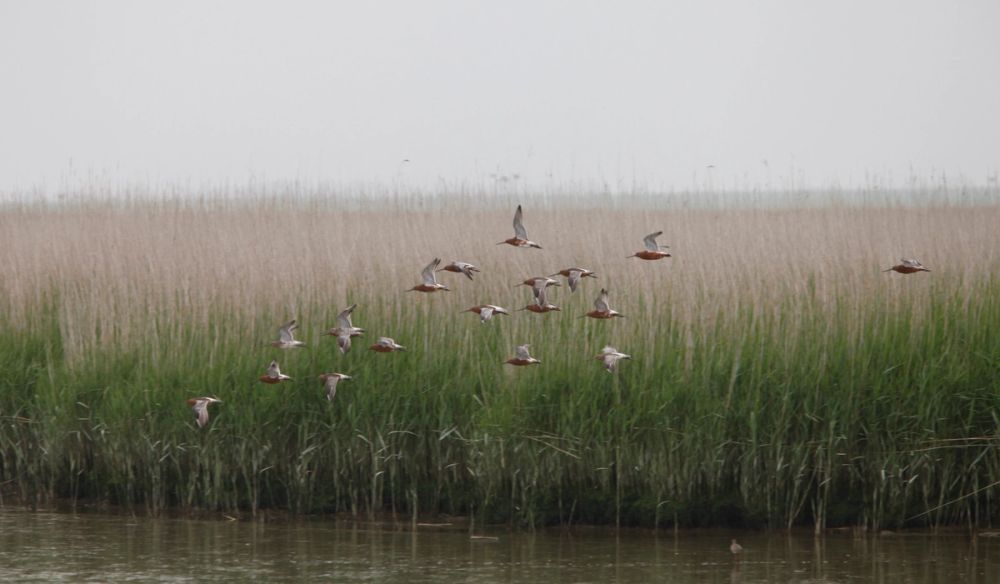
The Twin Dike Project
On November 8th of this year, representatives from the Province of Groningen, the Water Board Noorderzijlvest and the Delta Commissioner of the Netherlands hoisted the first pole which will be used to build a tidal culvert (tunnel which controls water flow) for the Twin Dike project.
The Twin Dike is a pilot project coordinated by the Water Board Noorderzijlvest and WaterLANDS partner Provincie Groningen. The aim of the Twin Dike project is to find efficient and innovative alternatives to traditional dike reinforcement. The Twin Dikes combines flood safety with sludge sedimentation and the development of brackish water for nature and saline farming.
The Twin Dike is located at the coast of the Ems-Dollard, close to the city of Delfzijl. There is already an existing dike in the area. The project has build a second dike behind the existing dike. Silt that is currently suspended in the water in the estuary will settle in the intertidal area between the two dikes, thus creating a new pilot site.
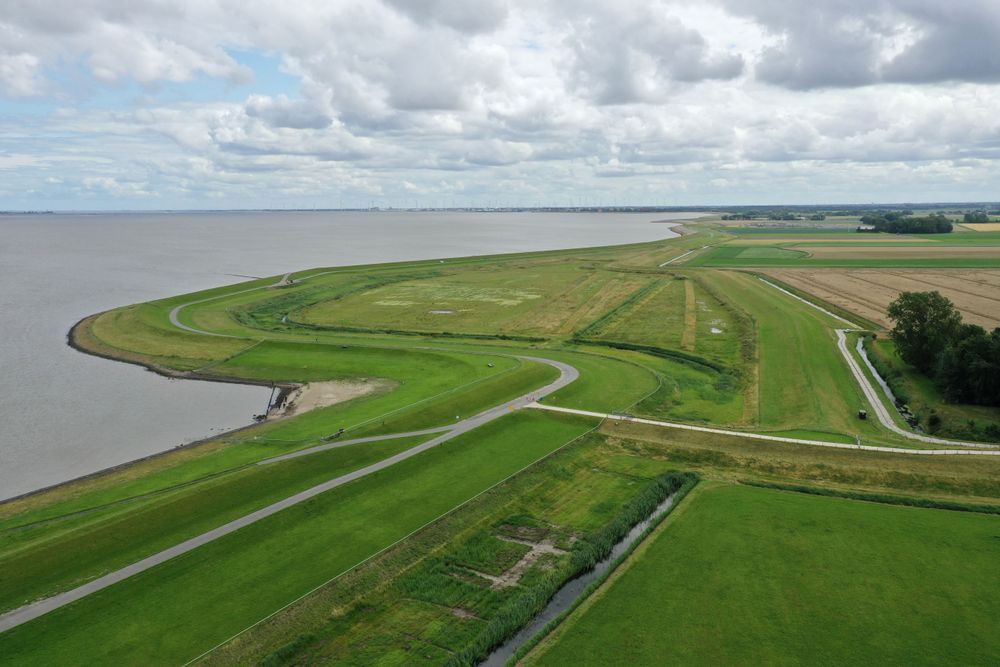
The tidal culvert, which will be ready by the spring of 2025, will control the tides behind the dike and improve the water quality of the Ems. The new area of land between the dikes will be used as a site to experiment with saline farming. Part of the land will also be used to create habitats for nesting birds, such as avocets.
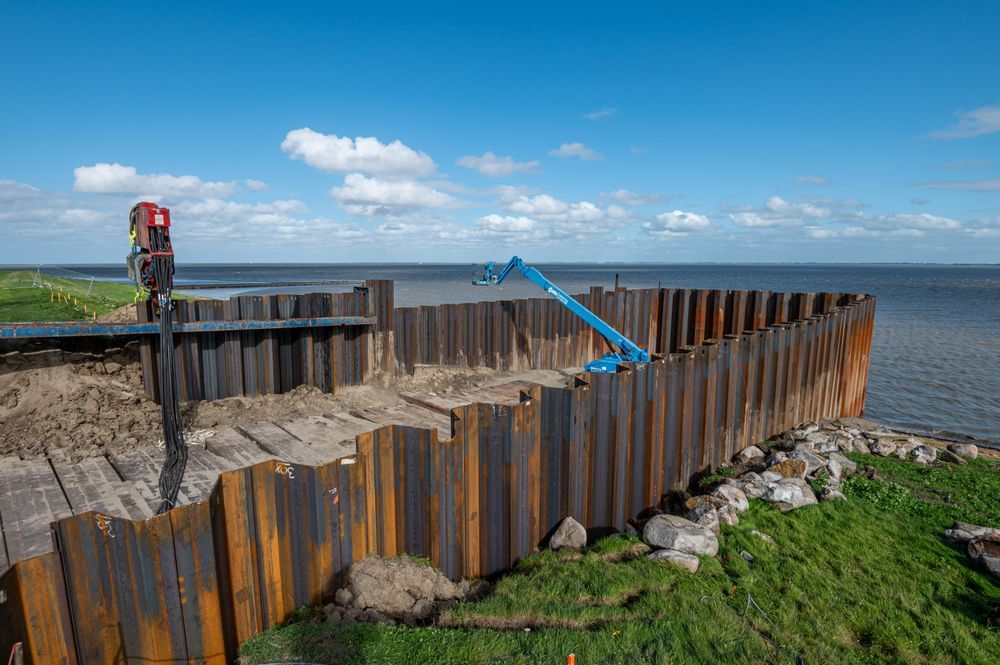
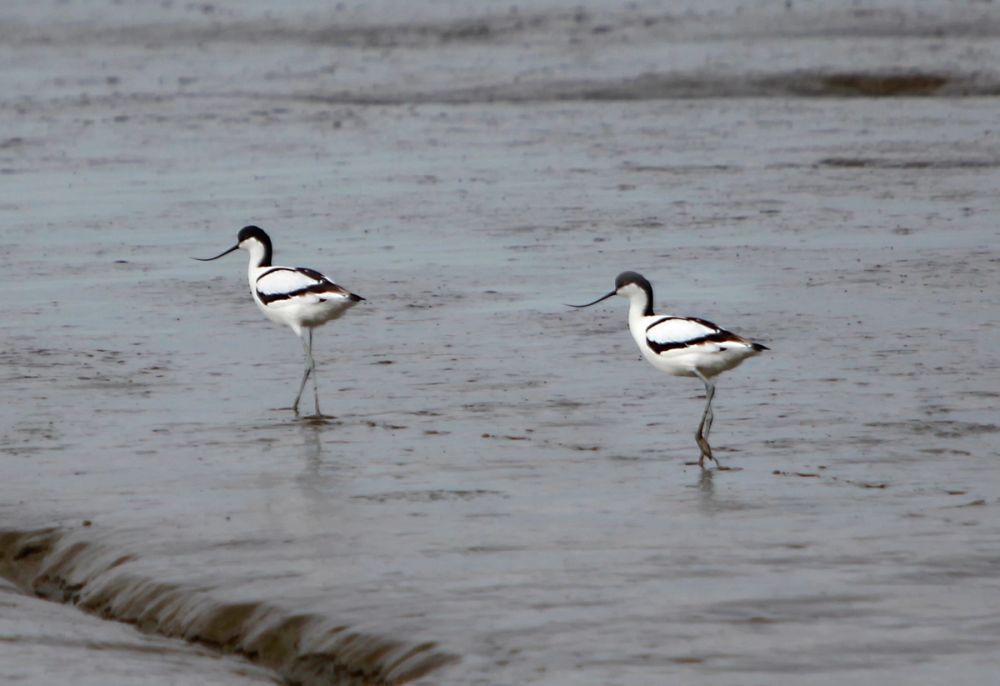
The Delta Commissioner Peter Glas complimented the Twin Dike project as an innovative example of construction in harmony with natural elements.
